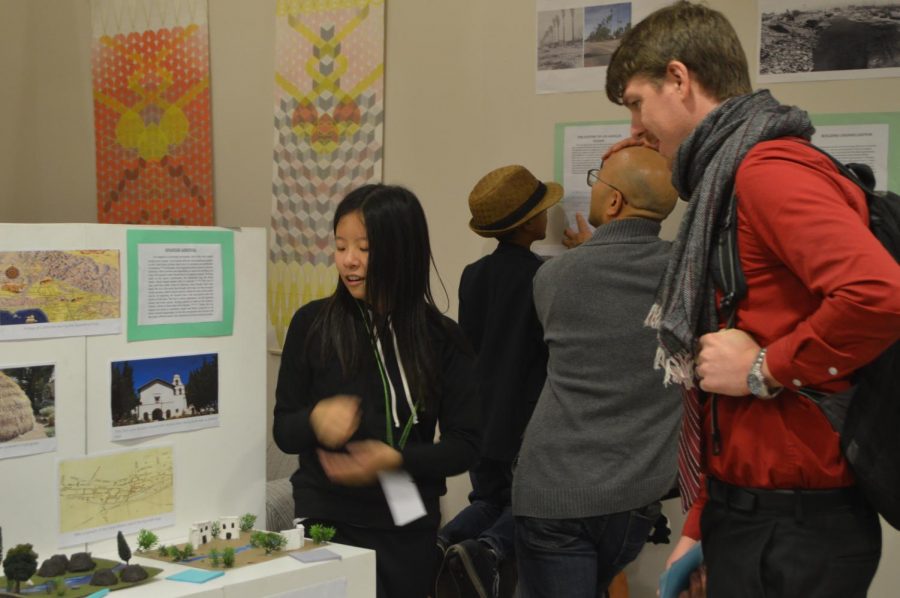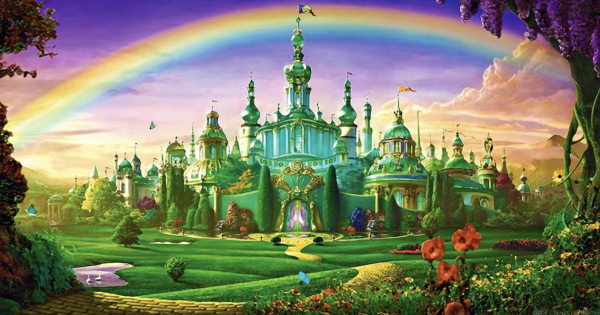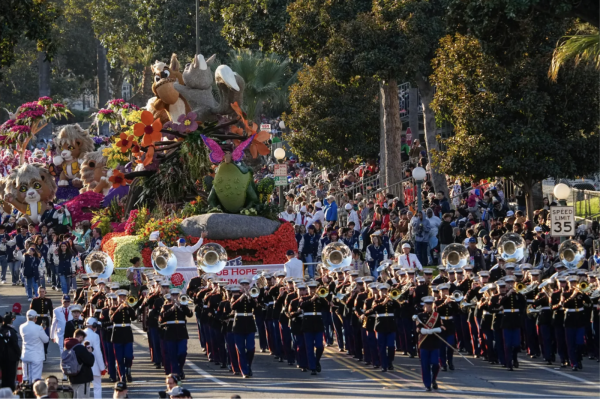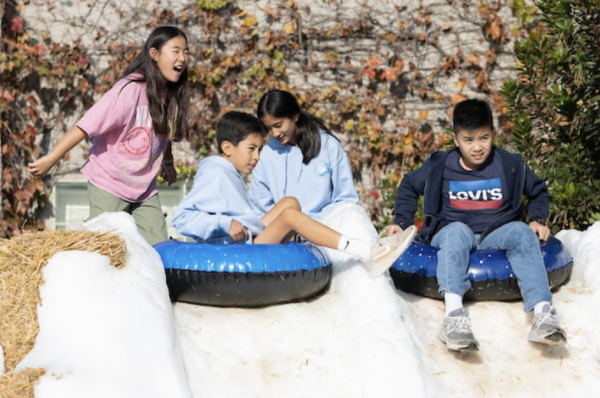7th Grade History Curates Los Angeles Museum of Geography
Photo courtesy David Egan
Mayline Chen ’24 showcases her project to Dr. Frewen.
“We’re about to open it to the public,” Mr. Bellaimey announced to a herd of excited 7th graders on December 4th, minutes before opening night. The downstairs library was transformed into the LAMoG — the Los Angeles Museum of Geography, curated and executed by the 7th grade history class. This space became a multimedia, multi-exhibit museum, about why Los Angeles is where it is, and how our city has changed over the decades. In minutes, this group of middle schoolers would become the most knowledgeable people in the room about LA.
Mr. Bellaimey continued: “What happens when we open it to the public is we suddenly transform into a calm museum instead of a frantic backstage show…When stuff isn’t working, don’t panic… And we’re open in 5..4..3..2..1..”
Herds of parents and teachers flooded into the museum. They grabbed pamphlets and began to explore the playground of research. Some would start with exhibit tours led by student docents. Others would wait excitedly for the next garden tour, exploring Prep’s own garden of native California plants outside the office. Or perhaps, they would wait for the musical, The Survivors, which would play intermittently in Miller Theater — a 20 minute historical show written, directed, and acted by five seventh graders.
There were countless other opportunities to learn about Los Angeles history or to explore the carefully curated research of the 7th grade class. But first, a peak behind the curtain, of how this museum came to be:
Building the Museum
“The skills you’re using to build a museum are the skills you’re using in a history class — looking at sources, writing, editing, communicating, public speaking,” Mr. Bellaimey explained during a rare break from the hectic job of running a museum. “In all of my teaching, I’m always trying to find ways to make it feel like the stakes are real…To teach this kind of content in a museum is a way for their audience to be not me. Everyone in this room right now is learning and judging and that is a much better motivation to do this work.”
The 7th grade explored both the LA River and local museums to pull inspiration. These museums included the Natural History Museum’s “Becoming Los Angeles” Exhibit, the Science Center, The Autry Museum of the American West, and the Descanso Gardens.
The 7th grade class was grouped into “Exhibit Teams” and “Special Teams,” each having its own tasks, requiring its own skills, and contributing its own flare to the final product. The Exhibit Teams each designed one of the exhibits displayed on the downstairs floor in the library. At every turn there are installations, models, and new facts to learn about our city. Tour docents take guests on tours of each exhibit, beginning with a model of a Tonga village compared to a Spanish village, highlighting the role of Native Americans in the region. From channelization of the river in concrete to the pollution of the LA River, the 7th grade tour guides were knowledgeable storytellers.
The graffiti section explored the images that decorate the concrete walls of the LA river. These images ask the question: what distinguishes art from vandalism? The “River Cats” are a particular motif along the river, and in the arts and crafts section, student instructors teach guests how to make their own River Cats out of stencils and a marker-spray-paint-contraption. Other exhibits include one on the creation of the LA Aqueduct, St. Francis Dam disaster, and the drought.
Throughout the museum were sections on Global Connections, and there was even an entire wall dedicated to this. The focus of 7th grade history at Prep is Los Angeles and Global Issues. Mr. Bellaimey noted how “all the areas are meant to make that connection explicit between LA and what’s happening around the world.” These ranged from referencing the Chicago River pollution to noting the Mosul Dam in Iraq, which is on the verge of collapse due to the soft, unstable gypsum rock it was built on, is similar to the St. Francis Dam which collapsed in 1928.
These students who designed the arts and crafts station were part of the Special Team. Mr. Bellaimey explained the role of the special teams: “designing logos, ordering shirts, planning and writing the musical… the people who made detective booklets, or the audio booth…” He explained that these are “skills of staying organized and working together as a team, which is I think particularly important for kids coming into Prep.”
In the glass-walled study rooms of the library were two adjacent projects of Special Teams. In one of the rooms, LAMoG merchandise was sold by the students who designed the shirts, sweatshirts, and water bottles. Next door was the arts and crafts room, containing the students knowledge of the graffiti of the LA River, and the River Cat symbols. The museum was run like a well-oiled machine, built by every artist, historian, writer, and ecologist of the class.
The LA Aqueduct, a Story of Corruption, Violence, and Questionable Political Power
Perhaps the most interesting story in LA history is the creation of the aqueduct and the scheme of Fred Eaton. Mr. Bellaimey said, “As a history teacher I love telling stories and to me it’s got everything. It’s got corruption, it’s got violence and murder, it’s got questionable political power — and I think that’s my favorite stuff to teach.”
Docents Evan Guyer ‘24 and Hannah Pitney ‘24 told the story in the first tour of opening night.
EG: The LA Aqueduct was constructed to bring water from Owens Valley into Los Angeles. Mulholland and Eaten were these two guys who built the aqueduct.
HP: It was William Mulholland’s original idea, and Eaten offered to help him, and so he showed Mulholland the realm of the Owen’s Valley where we can get our water from. And Mulholland thought it was a great idea, but Eaton came back to the Owen’s valley without Mulholland, and pretended to be a government official. So, he bought up all the Riparian rights and their water rights
EG: And all the rights to that land with all that water
HP: And they thought it was going to a national park but it was actually going to the aqueduct…
EG: So there’s this Owens Valley — once they found out that they were losing this water to Eaton they were like …“This is not good,” so they ended up rebelling against it and they even blew it up — they dynamited part of it.
HP: They blew up part of the aqueduct with over 500 pounds of dynamite… [for] anyone who was even in the Owens valley, if you ever said that you supported the aqueduct, they would either lynch you or run you out of town. So they took it very seriously.
The exhibition was also complete with a T&T simulator crafted out of a bike pump.
The Musical
In the Black Box theater, a showing of the musical The Survivors was on at various points in the evening, written, directed, and performed by Hailey Neufer, Hannah Pitney, Roderick Liu, and Grace McConnell. The Survivors told the story of the St. Francis Dam, built between 1924 and 1926 by the City of Los Angeles to create a reservoir for the city’s Aqueduct system. William Mulholland was the Chief Engineer of the project. But at 11:57 on March 12, 1928, the dam failed catastrophically, and as a result, a 10 story high avalanche of water swept 54 miles across the LA Basin, according to the LA times. More than 450 people were killed.
“A Typical San Francisquito Day,” was the opening act. The musical was 20 minutes long, consisting of four songs. The Survivors told the story of the dam’s opening, and the excitement around it among the farmers who lived there — some of whom would survive the dam’s collapse, and some of whom would not. In the third song, the musical introduces Tony Harnischfeger, who was the dam keeper in real life, living with his girlfriend Leona and son Coder. Mulholland makes an appearance, asking himself, “Am I just a man who can’t control his ambitions?” But then — the dam broke — a fitting climax. The musical tells the story of the Mongito Family, whose house is destroyed, and the Harnischfeger, the first family to die when the dam broke. The play ended on a lighter note, however, to the musical stylings of Katy Perry’s “Roar:” “The dam fell down, but we got up, Hey! Already fighting ‘cause we must. You hear that dam, you hear that sound– We are the dam survivors, the fighters, dancing through the water, ‘cause we are the champions, when we heard the dam roar!”
The musical was entertaining and rooted in fascinating historical accuracy. Mr. Perlman shared his thoughts after the show: “It was really, really fun. Good storytelling.. the drowning scenes had so much pathos! I’ve never seen a drowning scene in a musical, and I’ve never seen three of them… it was amazing.”
The Los Angeles Museum of Geography
It’s is certain that the guests of LAMoG each took home a newfound appreciation for Los Angeles, a concern for the dangers of mishandling precious resources, and an overall inspiration to continue to build Los Angeles into a better place for generations to come. Senior Class President Peter Mugemancuro, one of the guests of the museum, articulated just this: “Water is incredibly important to this area,” he said. “But the interesting thing is how much of our water comes from other sources. We wouldn’t be able to sustain our lifestyle in LA if we were only relying on the groundwater resources here. And it goes to show you how important water is to California as a whole and how fragile that network is.”
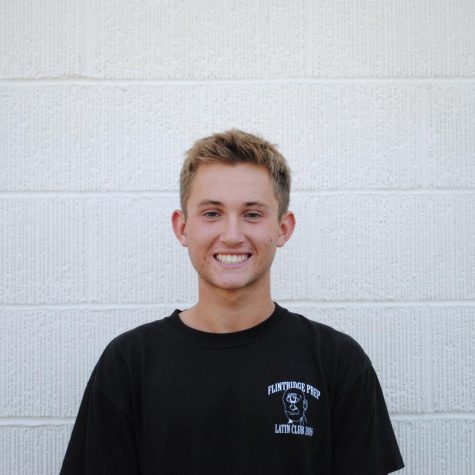
Grade: 12
What do you like to do in your free time? In my free time I like to read poetry and play basketball.
Why are you writing for The Flintridge...

